Blitzed cities still deprived 75 years after war
- Published
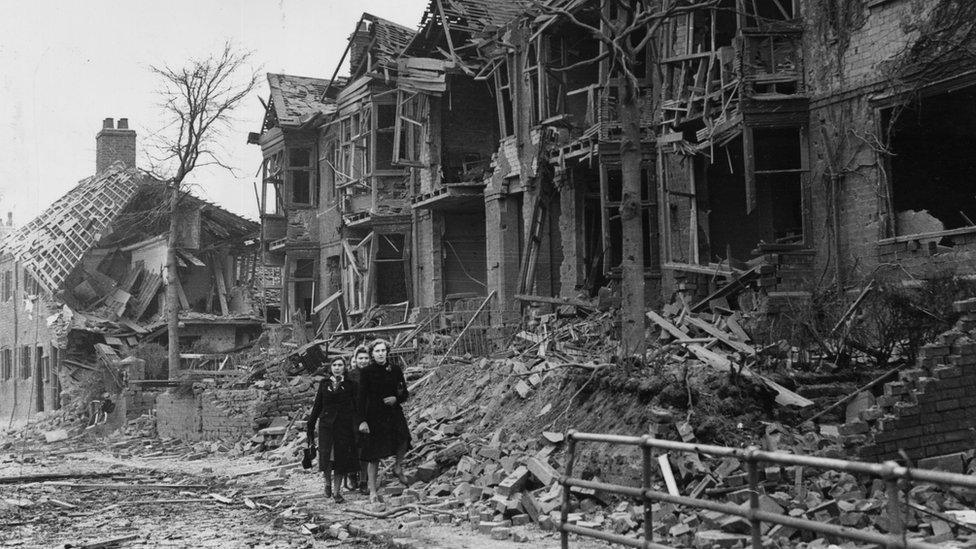
Cities that faced great damage in wartime show a consistent pattern of disadvantage decades later
Towns and cities in England which suffered high casualty rates from World War Two air raids are now likely to be places with high levels of child deprivation, say researchers.
They examined how well today's youngsters are faring in places that had faced the brunt of wartime bombing, such as Hull, Portsmouth and Coventry.
A consistent pattern of disadvantage was found, 75 years after the war.
This included high levels of hardship and poor results in education.
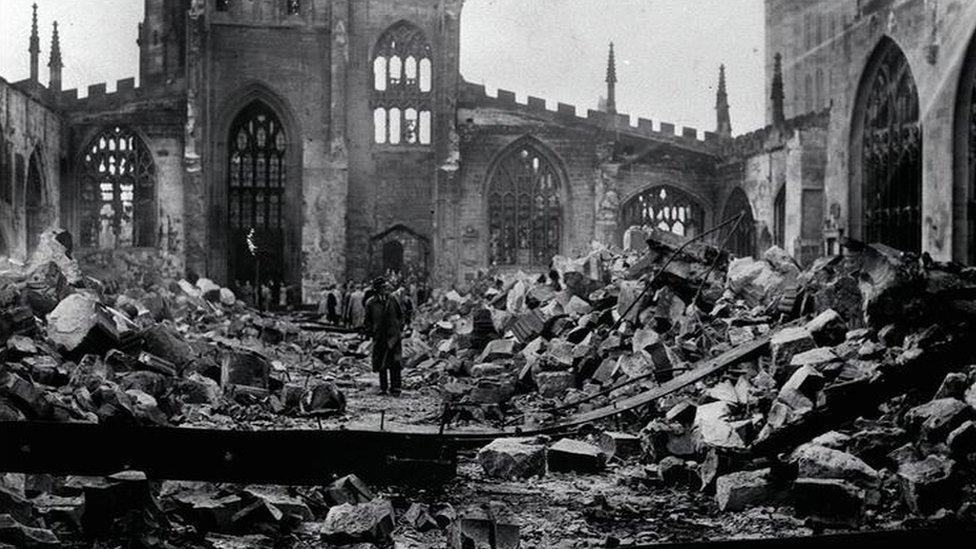
Coventry Cathedral badly damaged by bombing
Historian and author Professor Pat Thane said these worst-hit places were "generally working-class areas - and very many of them have stayed that way".
'Results are striking'
The research, published ahead of Remembrance Sunday, has been carried out by Timo Hannay, whose firm SchoolDash usually carries out data analysis on education.
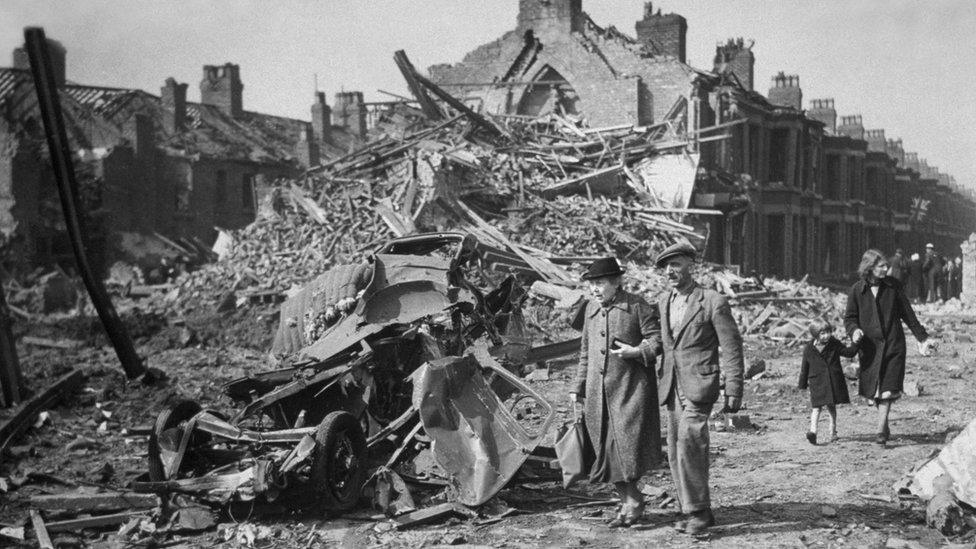
Bomb damage in a street in Liverpool
But in this case, he mapped current levels of childhood deprivation, well-being and educational achievement against places which had faced high levels of wartime casualties and destruction, external.
"The results are striking. Today, almost all of these have child poverty rates well above the national average," said Dr Hannay, as commemorations mark the 75th anniversary of the end of the war.
London was not included - as it is such an outlier in its size and diversity - and these comparisons are for England and not other parts of the UK which also faced wartime bombing.
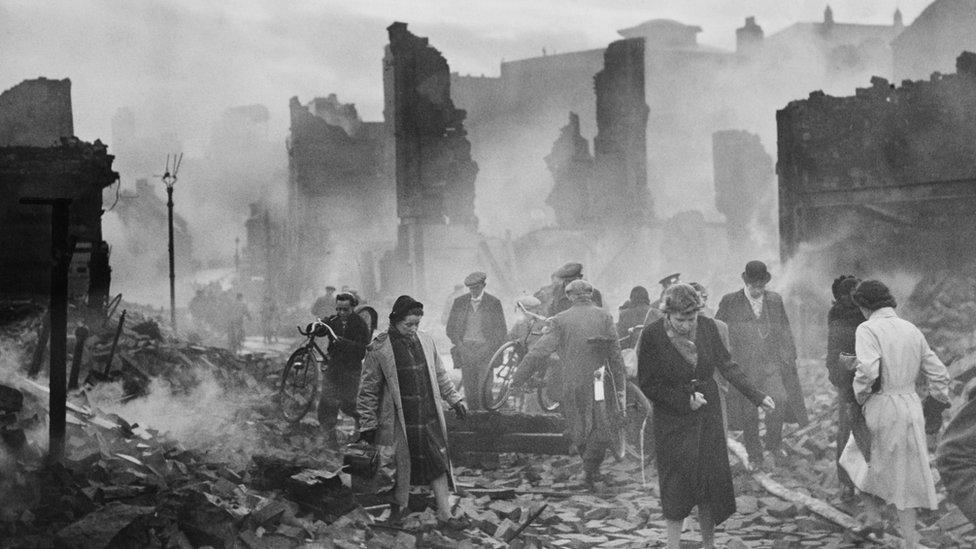
Coventry suffered great damage from the Blitz
Researchers looked at what had happened to English towns and cities outside the capital which had been heavily bombed, such as Liverpool, Plymouth, Hull, Portsmouth, Southampton, Bristol, North and South Tyneside, Coventry, Birmingham and Manchester.
Income deprivation
These were compared against measures of disadvantage, including the "income deprivation affecting children index" and eligibility for free school meals.
And this revealed a consistent pattern with almost all of these areas having above-average levels of poverty.

The aftermath of a bombing raid on Hull
In education, primary school tests, GCSE results and university entry levels were below the national average in most of the places that had faced particularly high wartime damage.
"Self-reported life satisfaction also tends to be low. On top of all this, Covid-19 death rates in many of these areas, specifically, those in the midlands and the north - have been much higher than in the country as a whole," said Mr Hannay.
"None of this is to imply a causal link between 1940s bombing raids and current social challenges," he says.
But he says it does show that many of the areas that suffered the most "continue to languish in a wide variety of ways".
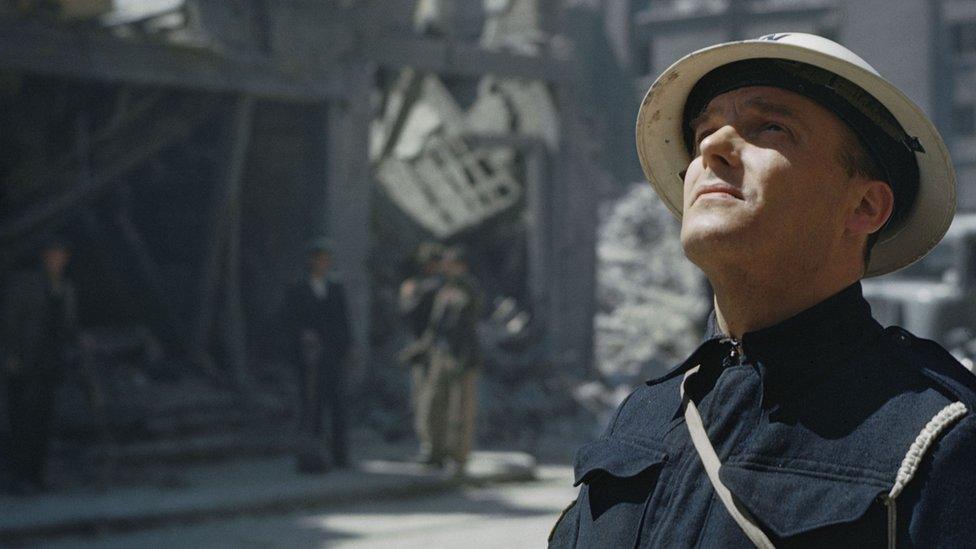
This year marks the 75th anniversary since the end of the Second World War
But if this is not about any long-term economic scarring, then what does it say about what happened to the communities who paid the highest price in wartime losses?
Daniel Todman, professor of modern history at Queen Mary, University of London, says this shows a pattern of places that were poor before the war continuing to be poor decades afterwards.
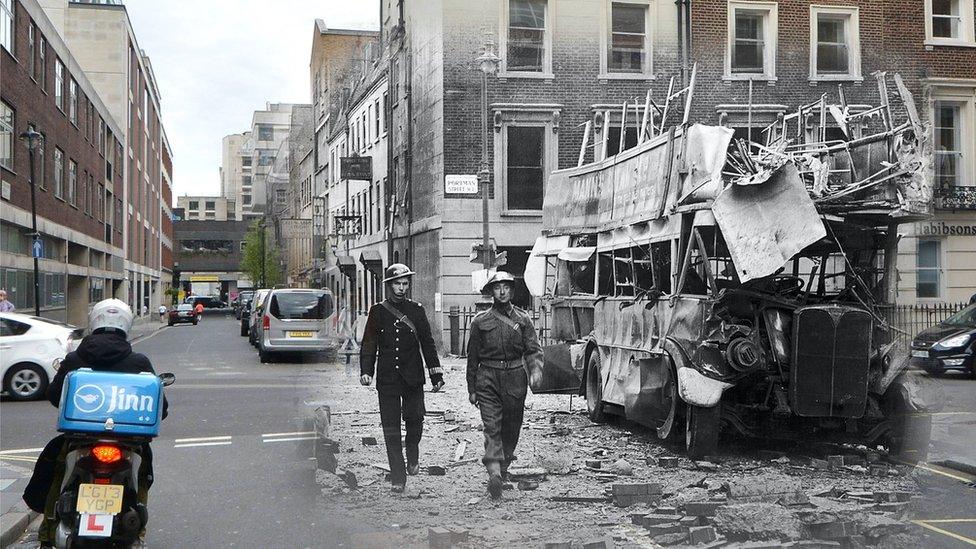
A photo montage that mixed wartime damage with how the street looks in modern London
He says it is also a reminder of how "geographically concentrated" the Blitz was and that the damage was not "shared out" across the country, with those in poorer, crowded housing often suffering the most.
The disadvantage in such places now, Prof Todman says is not the legacy of the war, but more a sign that the post-war settlement failed to "bring places up" and those "inequalities continue to exist".
There was a strong sense during the war of wanting to create greater fairness, says Prof Todman, but 75 years later, he says it could be seen as "unfair a society as it was in the 1920s and 1930s".
- Published8 May 2020
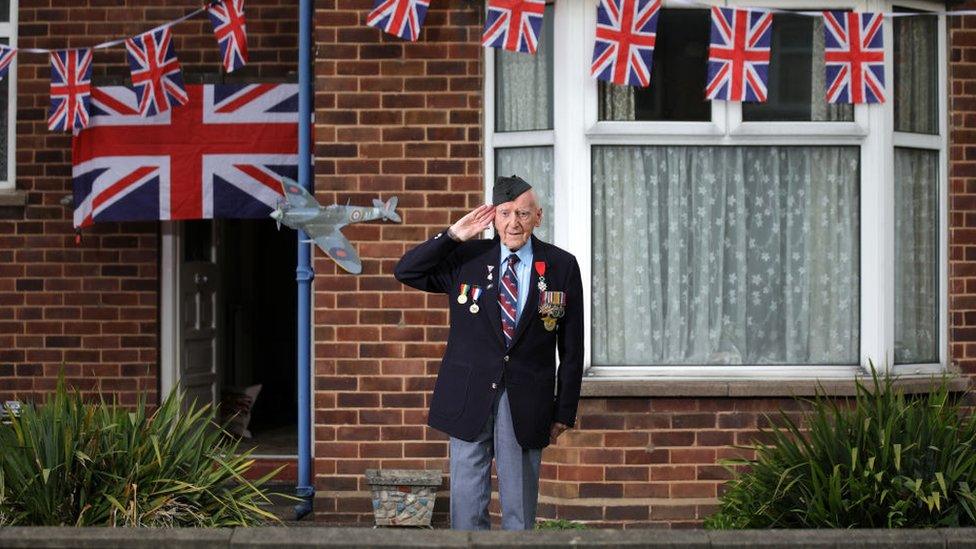
- Published4 March 2020